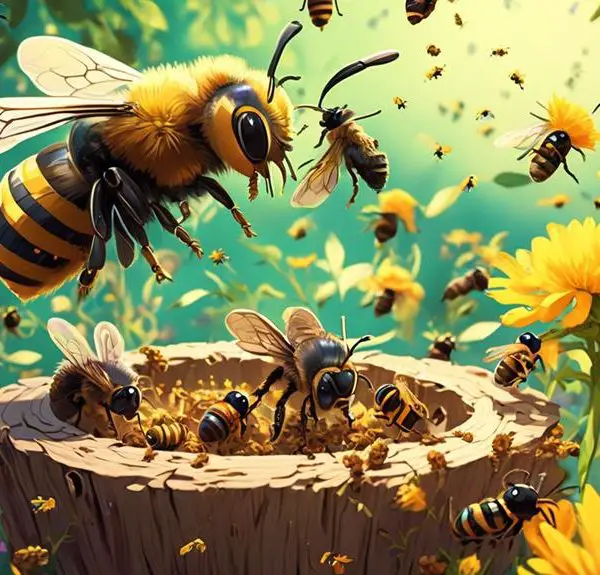Kindle your curiosity about mason bees' unique lifecycle; do they truly hibernate or is it something else?
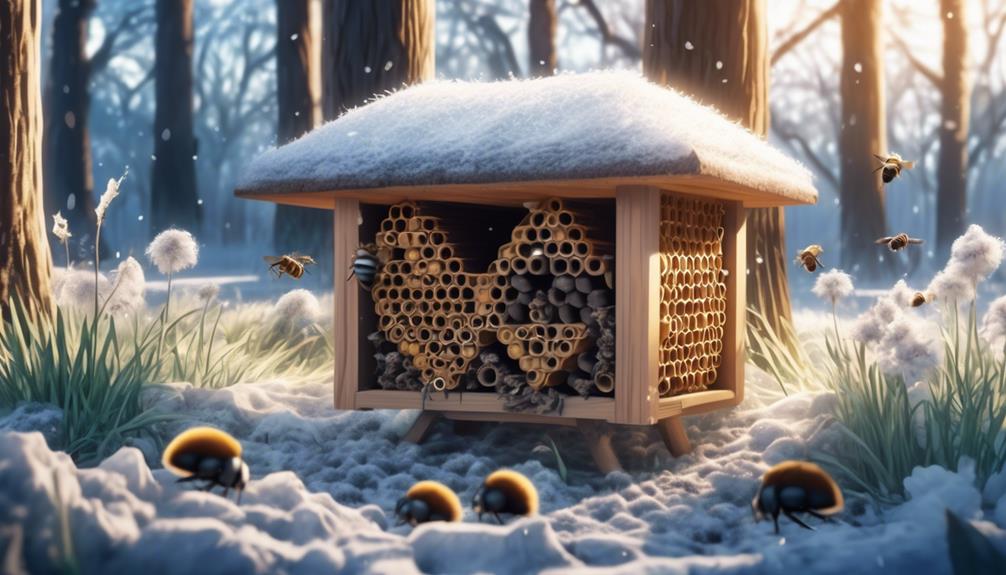
Do Mason Bees Hibernate?
You might not be aware, but mason bees, unlike their better-known cousin the honeybee, do not stay active year-round. These solitary bees have a unique lifecycle that includes a period of dormancy during the colder months.
However, does this inactivity actually equate to hibernation as we understand it in other animals? The answer might surprise you, and it could potentially change the way you think about these industrious little creatures.
Let's explore this intriguing aspect of the mason bee's life further.
Key Takeaways
- Mason bees undergo a hibernation-like state known as diapause during winter.
- Diapause slows down metabolic activities and reduces energy consumption.
- Mason bees hibernate individually in their nesting tubes.
- Providing a safe and secure hibernation environment is essential for supporting mason bees.
Understanding Mason Bees' Lifecycle
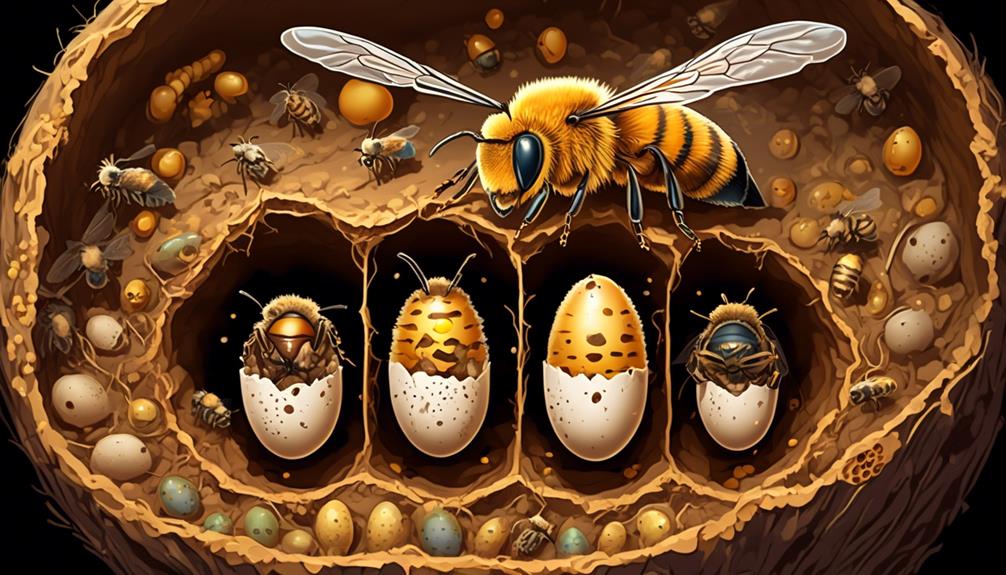
To fully comprehend the lifecycle of Mason Bees, it's crucial to note that these industrious insects undergo four primary stages: egg, larva, pupa, and adult. Each stage presents unique characteristics and processes that are integral to their survival and proliferation.
In the egg stage, you'll find the female Mason Bee has laid her eggs inside a secure nest. She meticulously supplies each egg with a mix of pollen and nectar, which serves as a food source for the soon-to-hatch larvae.
When the larvae emerge, they're completely reliant on the stored food provided by their mother. They consume this sustenance, grow, and then spin protective cocoons around themselves, transitioning into the pupal stage. This is when their metamorphosis takes place. They'll undergo significant physical changes, developing wings, legs, and antennae.
Ultimately, they emerge as adults. As mature Mason Bees, they'll carry out the fundamental roles of their species: foraging, mating, and nesting. It's in this stage they prepare for the next generation, ensuring their lifecycle continues.
Understanding these stages gives you a greater insight into the fascinating world of Mason Bees.
Winter Habits of Mason Bees
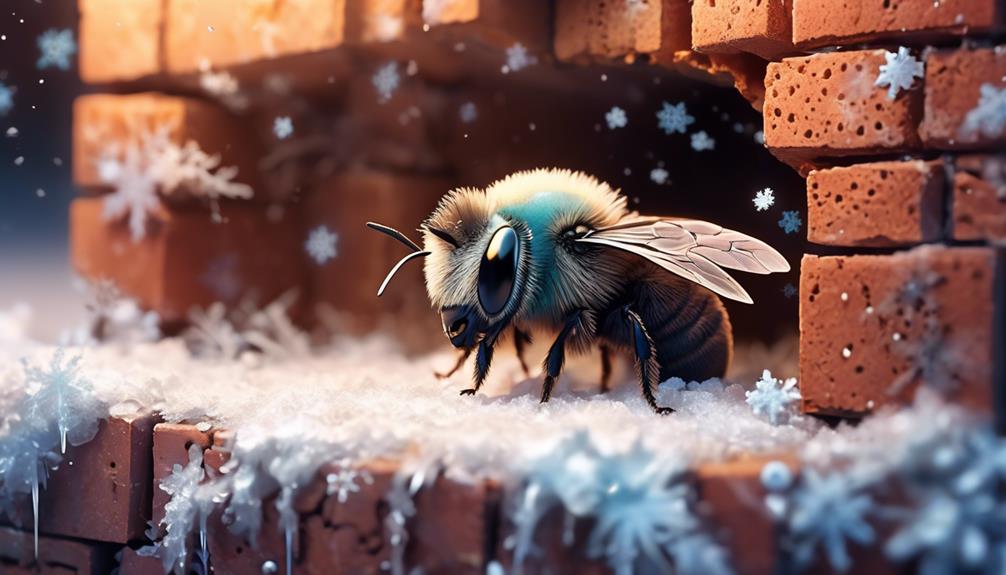
As winter approaches, Mason Bees enter a hibernation-like state known as diapause, a crucial phase in their survival strategy. During this period, the bees' metabolic activities slow down dramatically, their growth ceases, and energy consumption is reduced to a minimum. This is a physiological adaptation to survive the harsh winter conditions when food resources are scarce.
They hibernate in cocoons, which they build within the cavities of reeds, wooden holes, or even in the ground. These cocoons protect them from predators, maintain a stable environment, and shield them from winter's freezing temperatures.
Interestingly, it's the mature larvae that go into diapause, not the adults. They hibernate as pre-pupae, wrapped in a protective silk cocoon, waiting for the warmth of spring to emerge as adults.
The Science Behind Bee Hibernation
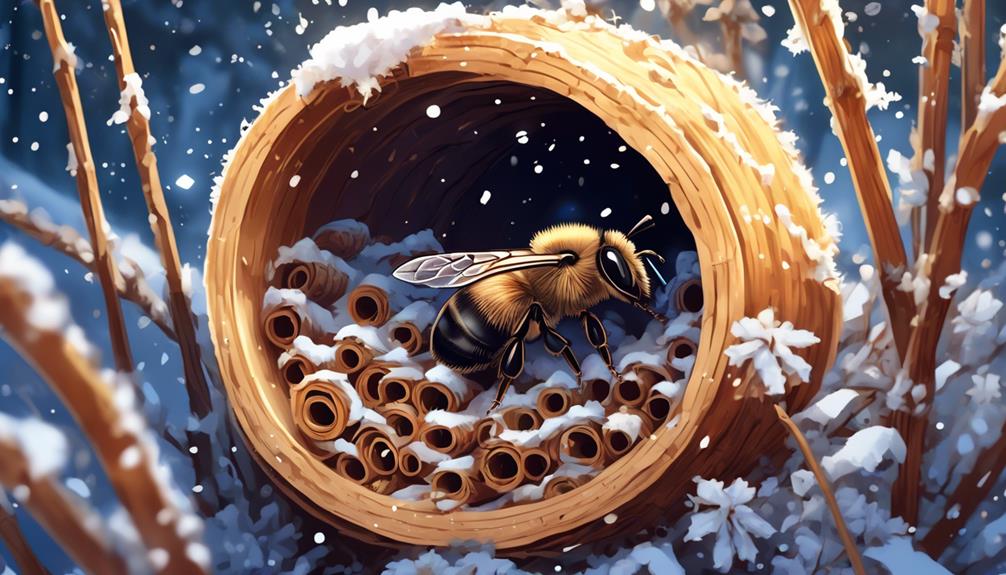
Building upon our understanding of mason bees' winter habits, let's examine the intricate biological processes that underpin their hibernation. Fundamentally, mason bees, like other insects, rely on a process known as diapause. This isn't your typical hibernation—it's a state of suspended development, enabling survival in adverse conditions.
When you hear 'hibernation', you might think of a bear sleeping through winter. But diapause is more complex. It's triggered by environmental signals—shorter days and lower temperatures—and involves a slowdown of metabolic activities. This allows the bees to conserve energy and survive on stored resources.
Let's break it down further with a table:
Stage | Description | Outcome |
|---|---|---|
Preparation | As daylight hours shrink, bees consume more, storing energy. | Increased energy reserves. |
Diapause | Metabolic activity slows, conserving energy. | Survival through winter. |
Post-Diapause | As temperatures rise, metabolic activity resumes. | Return to normal life cycle. |
Mason Bees Vs Honey Bees: Winter Comparisons
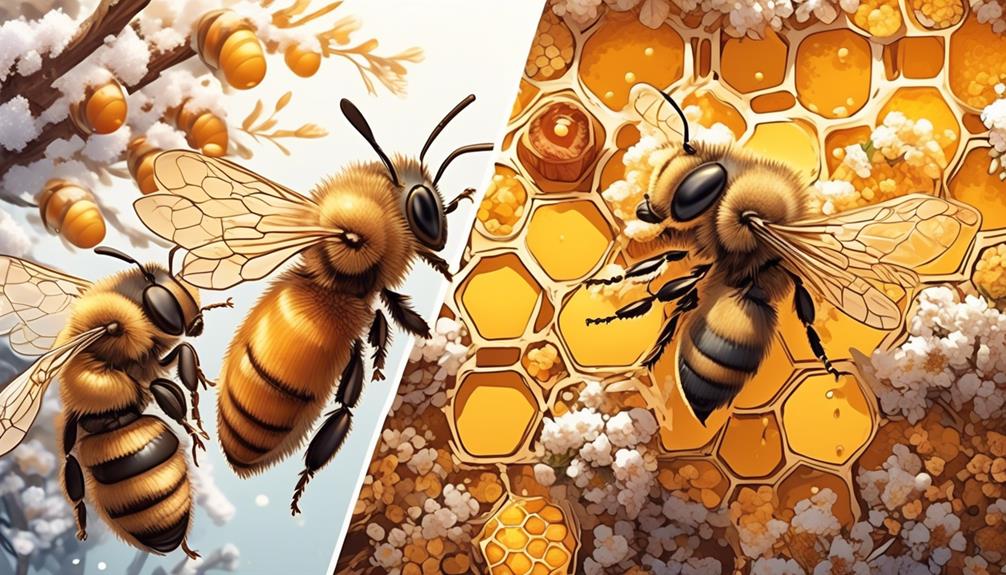
Diving into the cold season, let's compare how mason bees stack up against honey bees in their winter survival strategies.
Mason bees, unlike honey bees, don't overwinter as a colony. Instead, individual adult mason bees retreat into their nesting tubes, where they enter a state of diapause, a form of hibernation that conserves their energy reserves.
You'll find honey bees, in stark contrast, remain active throughout winter. Their survival strategy is communal. Honey bees cluster together in their hive, generating heat by vibrating their wing muscles. This communal heat generation, combined with their stored honey, keeps the hive at a steady, life-sustaining temperature, even in the coldest months.
It's fascinating to observe these different survival strategies. Mason bees' solitary approach reflects their solitary nature – they don't produce honey or live in hives. Honey bees, on the other hand, rely on their social structure and communal living for survival.
Supporting Mason Bees During Winter
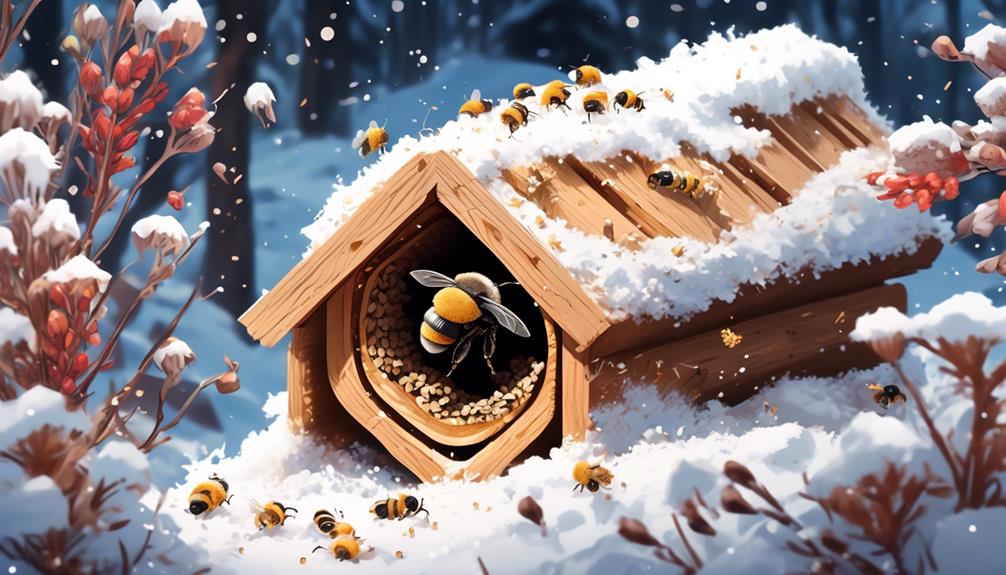
To support mason bees during the winter, it's essential to understand their need for a safe and secure hibernation environment. Mason bees typically nest in hollow reeds or holes in wood, so providing this type of environment can be beneficial. You can create a mason bee house using untreated wood or bamboo, ensuring the holes are about 8mm in diameter and 15cm deep to mimic their natural habitat.
Mason bees hibernate as adults in their cocoons, where they're vulnerable to freezing temperatures. Insulating their house can help. Use materials like straw or bubble wrap, but avoid blocking the entrance. It's also critical to place the house in a location that's shielded from wind and heavy precipitation.
It's important to remember that mason bees don't forage during winter. However, they do need a moisture source for emerging in spring. Keeping a shallow dish of water near their house can be helpful.
Lastly, don't disturb the bees during their hibernation. They're not 'sleeping,' but in a state of diapause, a physiological pause in development. Disturbances can negatively impact their survival and emergence in spring.
Supporting mason bees during winter involves providing a safe habitat, insulation, and water, all while minimizing disturbance.
Conclusion
So, do mason bees hibernate? Yes, they do.
Unlike honey bees, mason bees retreat into their cocoons for the winter, entering a deep sleep or diapause. This period of hibernation is vital to their lifecycle.
As a lover of these industrious pollinators, you can support them during the colder months by providing secure and undisturbed places for hibernation.
Remember, fostering a healthy environment for mason bees aids in their survival and continues the cycle of pollination.


